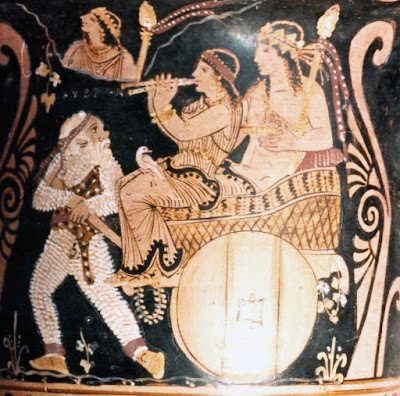 |
Detail of Paestan krater
Source: Dr Christos Tsirogiannis |
My
predictions for 2017 make a good introduction: further seizures as a result of the photographic archives, heritage crime at archaeological sites in the UK, and moves in Westminster to address the protection of cultural property in time of war. I have not covered the latter on LM as some of the discussions are sensitive.
Seizures
The year started with the news of several thousand seizures in a Europe wide
Operation Pandora. A major set of seizures were made on the collection formed by the
Hobby Lobby.
Smaller seizures included sculptures from
Eshmun in the Lebanon, and a fragment of a
Persepolis relief.
A head of
Drusus Minor was returned to Italy from the Cleveland Museum of Art after it was realised that it had come from a known excavation and had been removed from the archaeological store.
A series of objects were seized from an unnamed
Manhattan gallery (
Sardinian warrior,
Paestan lekythos, Apulian
kantharos from the 'J.M.E. collection'). Another seizure included an
Attic red-figured lenythos that had formed part of the
Kluge collection. An
Attic red-figured amphora was seized from a Manhattan gallery after it was recognised from the Becchina archive. A
sarcophagus was seized from a Manhattan gallery.
Fragments of a Roman sarcophagus from outside Rome were seized on
Sardinia.
Hungary has purchased further part of the
Sevso Treasure.
Surfacings
There have been several sightings of objects identified from the photographic archives. They include:
A
Paestan krater was returned by New York's Metropolitan Museum of Art, and a
marble Zeus sold by the Fleischmans to the J. Paul Getty Museum was handed over.
Metal-detecting
The police are acknowledging that there is an issue relating to illegal metal-detecting in
East Anglia. An example of such activity was noted for
Weeting Castle. The number of Treasure Finds in the UK has
increased. The revised code of practice for metal-detecting has been
issued.
Reviewing old cases
Although looting continues to be a problem, it is important to look back at historic cases that have yet to be resolved. They include the series of
Roman imperial portraits looted from Bubon in Turkey and now in North American and European collections.
The process of how looted antiquities were acquired by museums and private collectors continues to be researched. One of the key figures in the acquisition of objects by the J. Paul Getty Museum was was
Fritz Bürki. Until the full histories of the objects are disclosed a question mark must remain over the objects.
The Michael C. Carlos Museum at Emory University has yet to resolve the case of
three disputed items that have been identified in the Greek press.
Forgeries
Forgeries continue to corrupt the market and provide false information about 'ancient art'. The problem of forging
Anatolian sculptures has been discussed.




















